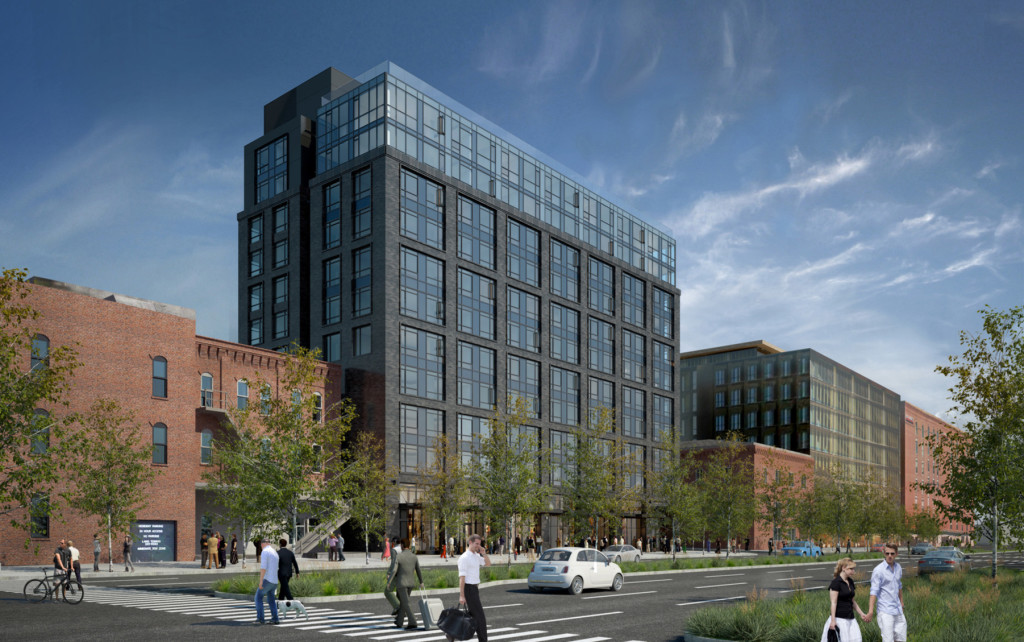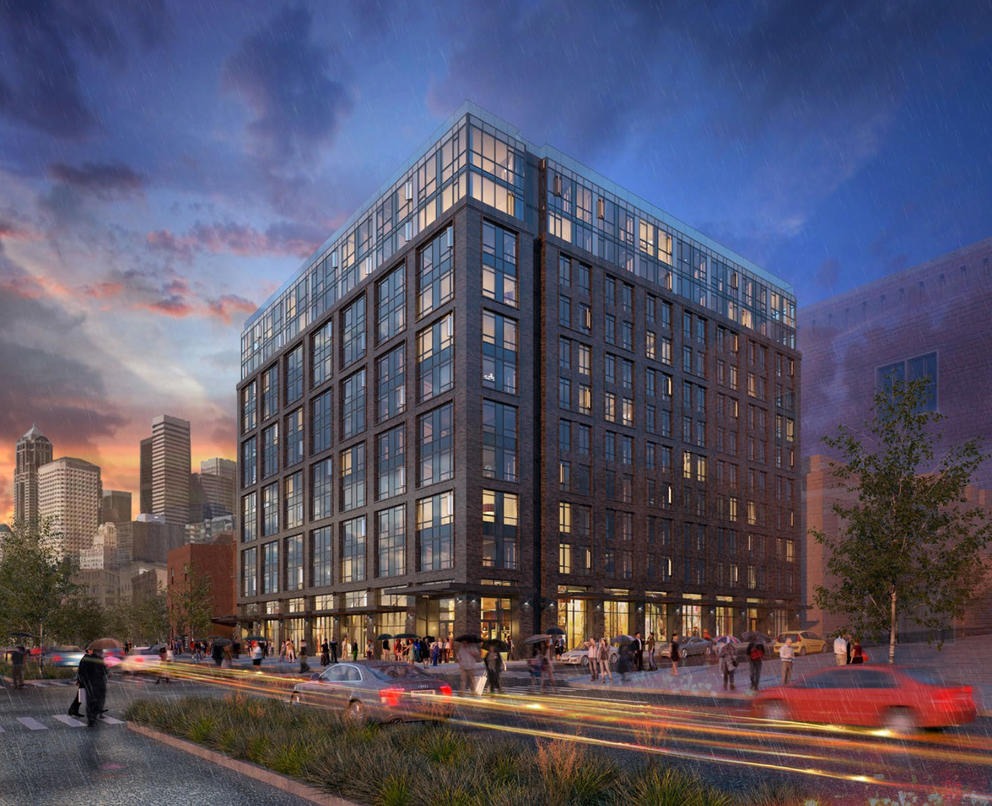It may be time to show some sympathy for Kathy Nyland. In recent months, the besieged director of the city’s department of neighborhoods has become the face of the escalating battle over Pioneer Square — and, perhaps, a whipping boy for the city’s uncertain commitment to its physical heritage.
Nyland’s pain is partly self-inflicted. She likely overstepped her authority last year by approving plans for a 12-story apartment tower at the foot of Jackson Street, which her own advisory panel, the Pioneer Square Preservation Board, had voted against 7-1 — an all-but unprecedented move for a city administrator. Nyland has also criticized the idea that preservation district boards can use “fuzzy” concepts such as scale and compatibility to determine whether building projects are allowable in the city’s eight historic districts. When a city hearing examiner last week reversed Nyland’s Pioneer Square decision as “arbitrary and capricious”—a major slap-down in the world of government regulators—many local preservationists seemed to think the neighborhood director had gotten her just desserts.
But such celebrations may be overshadowing a larger story. In the case of the Pioneer Square dispute, the fight is hardly finished: several local land-use attorneys say that the developer, Portland-based Gerding Edlen, could readily win on appeal. In similar cases, state courts have overturned vague regulations that do not offer developers specific guidance for what is and isn’t allowed.
More fundamentally, the case has already exposed serious contradictions in the city’s approach to historic preservation. Nyland is hardly a rogue administrator. A former senior policy advisor for Mayor Ed Murray, handpicked to run the neighborhoods department, Nyland must be seen as channeling the mayor’s famously vigorous promotion of housing downtown. Nyland, who declined to comment for this story, “is under some real pressure from higher up to be responsive to the need for greater density,” says Susan Boyle, a Seattle preservation architect and former chairwoman of the Seattle Landmarks Board.
Nyland's apparent disdain for Seattle’s established preservation process is an indication of a growing uncertainty over just which entity – the boards, the mayors office, or the courts – actually has authority over the city's finite supply of historical landmarks. Land-use experts say that until contradictions in the city’s regulations are addressed, the city can expect more clashes between preservation boards and developers. “It is a dilemma that the city has created for itself,” says Mark Hinshaw, a Seattle urban planner and Crosscut contributor —and one that needs to be resolved “before it starts disrupting the downtown real estate market.”
That dilemma is most visible in the clash between Seattle’s decades-old preservation ordinance and revisions to the zoning code in 2011. Boards are empowered to reject new buildings if they are not “of a scale compatible with surrounding structures.” Pioneer Square’s board has traditionally interpreted that to mean that new buildings should be roughly similar in size to the district’s older buildings, which typically run between two and six stories. By contrast, the city’s zoning code, amended about five years ago, allows building heights up to twelve stories in some areas of the district.

That tension may not have mattered in 2011, when the city’s downtown housing market was moribund (which helps explain why the upzone attracted little public attention). But it’s become a glaring problem in the current boom. By encouraging expectations for taller buildings, the more permissive zoning has helped push up land prices, which has meant more pressure on developers to demand the largest building possible.
The city is hardly unaware of the tensions unleashed by the upzone. In early 2015, well before Nyland became director, staff members at Department of Neighborhoods were considering a “reorganization of the District Guidelines” in the context of the new height limits, according to an email sent by staff. And last fall, land-use attorneys say, rumors circulated that the city was “thinking about “opening up the preservation ordinances” for some degree of review. Yet neither of these efforts were ever undertaken—in part, one developers’ attorney says, because the city lacks the stomach to deal with such a “political beast.”
In fact, as the Nyland dustup shows, there is also a growing political impasse emerging over the role and authority of the city’s preservation boards. When the first historic districts were created in the 1970s, their boards were granted considerable latitude to determine such matters as scale and compatibility. That was partly because districts were considered too complex, with too many different types of buildings, to be governed under a single, proscriptive code. The latitude also reflected the city’s desire not to inject itself into every land-use decision. Traditionally, the city “wants to respect the boards’ decision and they generally do what the board says,” says one Seattle land-use attorney who represents developers, but is not involved in the Pioneer Square dispute.
Because of that history of board independence, land-use experts of all stripes were quite surprised when Nyland ignored the Pioneer Square Preservation Board’s vote on the Gerding Edlen proposal. As Peter Steinbrueck, a Seattle development consultant and former city councilmember, says, “I don’t know the history of directors overruling boards, but I can say that when it happens, it sends a real strong message that the process itself is not being honored or respected.”
‘That lack of respect cuts both ways. Developers say the process for reviewing historic district projects has grown inefficient and protracted. Boards may take a year or more to reach a review decision (Gerding Edlen waited more than 18 months) – an eternity for developers fearful that their market window is closing. There are also complaints that the boards can easily become vehicles for unrelated agendas: several of the people who brought the action against Nyland’s, for example, were residents living near the proposed project, whose property values may have been affected by its construction.
Developers have lobbied the city to “streamline” the review process, and some of their recommendations have preservationists on edge: some developers would want the city to strip preservation boards of their authority to review proposals for new buildings in historic areas. But even preservation advocates acknowledge that the review process has become too adversarial and that boards need to be far more proactive in telling developers how to win approval.
As Chris Moore, executive director of the Washington Trust for Historic Preservation, a key player in the preservation debate, puts it, “it’s not [the boards’] job to design the building, but it certainly is their job to help guide and put proponents on the right track to something that will meet the criteria, will meet the design guidelines.”
Still, preservation advocates suggest that some of the foot-dragging by the boards is necessary. Some boards increasingly regard themselves as preservation firewalls. “That’s something I’ve seen recently with some of the boards,” says one Seattle developer attorney who deals with preservation cases. “This feeling that there is a lot going on in Seattle right now and are we losing our identity, and is it up to us as a board charged with historic preservation to really step up and give these projects more scrutiny than maybe we would have in the past.”
In turn, preservationists’ growing combativeness, coupled with the city’s mixed messages on preservation, may also be encouraging developers to take a more aggressive, less compromising approach—which simply feeds into the standoff dynamic. David Bricklin, the Seattle attorney who appealed Nyland’s decision to the hearing examiner, says that in the hearing, the developer’s architects “acknowledged that they were not given any leeway [by the developer] to shrink the envelope of the building. We said, ‘when you heard [the board’s concerns about scale] why didn’t you come back with something arguably more in scale with surroundings? He said he could only design buildings consistent with ‘the program’ and ‘the program’ was to fill the allowed space.’”
Adds Boyle, the former landmarks board chair: “Was this a case where both sides just decided they weren’t going to listen to each other, or that they couldn’t listen to each other, and so just forged ahead and see if it was going to work out?”
With preservationists and developers so far apart, and tensions likely to escalate as the boom continues, the city hasn’t been eager to jump in and address the preservation model’s many disparities. As a department spokesperson told me, “This is still a fairly recent ruling by the Hearing Examiner. The city will need time to better understand the implications moving forward.”
But one wonders how much time. Barring a collapse in the housing market, the situation is hardly likely to improve on its own. And the longer the city waits to “understand the implications” and fix its broken preservation system, the less palatable the fix is likely to be.



